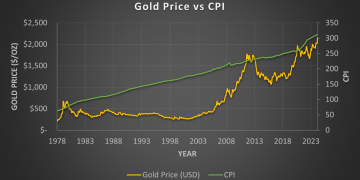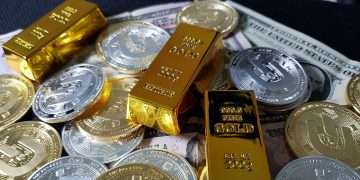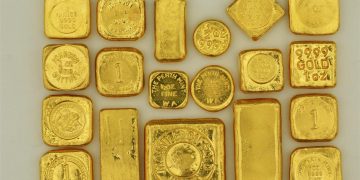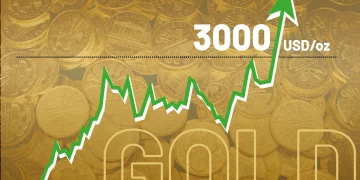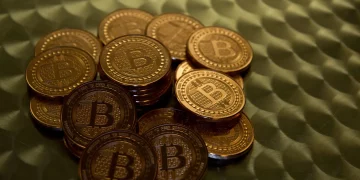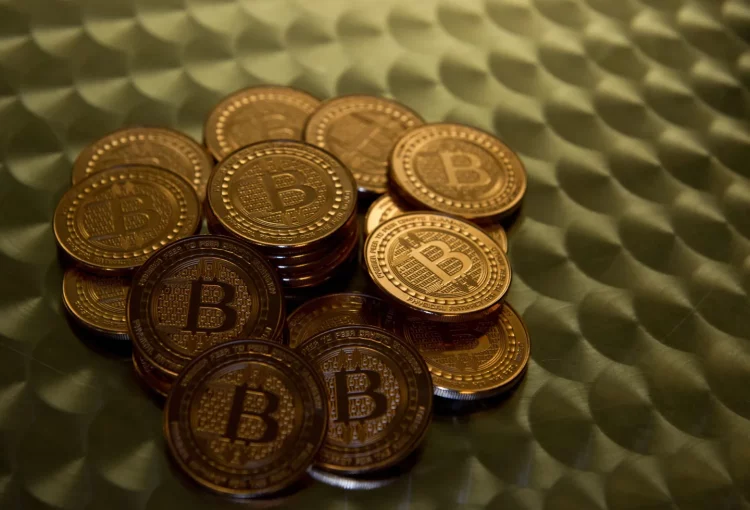Analysis of the Key Drivers of Gold Prices, According to Industry Experts
Gold prices are never static; they are constantly influenced by a combination of factors that span economic conditions, investor sentiment, geopolitical events, and market fundamentals. Industry experts unanimously agree that one of the dominant drivers of gold prices is the level of real interest rates. Real interest rates, which adjust nominal rates for inflation, have an inverse relationship with gold. When real rates are low or negative, gold becomes highly attractive because it offers a better store of value compared to yield-bearing assets. This relationship was evident during recent years when low or even negative real rates, especially in major economies like the U.S. and Europe, supported significant gold price rallies. Another major driver is inflation expectations. Gold has historically been viewed as a hedge against inflation, and when consumer price indices begin to rise sharply, investors often rush to increase their gold exposure. With ongoing supply chain disruptions, shifting labor markets, and structural changes in the energy sector, experts predict that inflationary pressures will persist well into 2025, maintaining support for gold prices.
Currency fluctuations, particularly movements in the U.S. dollar, play a crucial role as well. Since gold is priced in dollars globally, a weaker dollar makes gold cheaper and more attractive to holders of other currencies, thereby boosting demand. Conversely, a strong dollar can suppress gold prices. Experts also highlight geopolitical risks as a recurring catalyst. Whether it’s conflicts, trade disputes, or political instability, uncertainty tends to drive safe-haven buying of gold. During the COVID-19 pandemic, the Russia-Ukraine conflict, and U.S.-China trade tensions, gold consistently demonstrated its value as a risk-off asset. Furthermore, supply and demand fundamentals cannot be overlooked. Gold mine production, recycling rates, and central bank activities all contribute to the underlying supply-demand balance. Central banks have been net buyers of gold in recent years, motivated by efforts to diversify reserves away from the dollar and enhance economic security—a trend likely to continue.
Insights into the Future Trends in the Gold Market
Looking ahead to the future, experts point to several critical trends that could define the gold market’s trajectory. Firstly, central bank policies will remain a focal point. While many central banks had engaged in tightening cycles to combat inflation, there is growing consensus that 2025 could see a pivot toward more accommodative stances if global growth slows. Lower rates would benefit gold prices by diminishing competition from yield-bearing assets. Secondly, persistent inflation, even if it moderates from the peaks seen in the early 2020s, is expected to remain higher than pre-pandemic norms. Structural inflation drivers, such as the green energy transition and ongoing deglobalization trends that push up production costs, could sustain investor interest in gold as a protection mechanism.
Thirdly, the global geopolitical landscape remains fragile. Experts point to emerging flashpoints in Eastern Europe, East Asia, and the Middle East that could easily flare into broader conflicts, each event likely triggering safe-haven flows into gold. Additionally, political polarization within major democracies poses risks to financial market stability, making gold’s role even more critical. Fourthly, technological advancements are beginning to reshape gold ownership. Blockchain technology has enabled the creation of tokenized gold products, allowing investors to purchase fractional amounts of gold easily and securely. Experts foresee massive growth in this area, democratizing access to gold investments and potentially increasing global demand.
The sustainability movement is another future trend to watch. Ethical sourcing of gold is becoming increasingly important. Investors, especially institutional ones, are prioritizing environmental, social, and governance (ESG) criteria. This shift could create a premium for gold that is certified as responsibly sourced, affecting market prices and investor behavior. Lastly, experts anticipate that the integration of gold into broader diversified portfolios will become more widespread. With the traditional 60/40 stock-bond portfolio showing signs of strain under new economic realities, gold’s non-correlated nature makes it an increasingly attractive addition to asset allocation strategies.

How to Capitalize on These Trends for Investment Success
Successfully capitalizing on these trends requires strategic foresight and disciplined execution. First, maintaining a strategic allocation to gold within a diversified portfolio is crucial. Leading investment advisors suggest allocating between 5% and 15% of portfolio assets to gold, adjusting the percentage based on risk appetite and macroeconomic conditions. For those particularly wary of economic instability or persistent inflation, higher allocations might be justified. Second, blending different types of gold exposure can enhance returns and manage risk. Physical gold offers unmatched security and acts as a true hedge during systemic crises. Gold ETFs provide liquidity and ease of trading, making them ideal for tactical adjustments. Mining stocks and streaming/royalty companies offer leverage to gold prices but come with higher volatility. A well-balanced approach across these instruments can provide both stability and growth potential.
Third, use dollar-cost averaging to build your gold position gradually. This strategy reduces the risk of buying heavily during price peaks and ensures consistent exposure over time. Fourth, stay informed about macroeconomic indicators. Monitoring inflation rates, central bank policy shifts, geopolitical developments, and currency movements can provide early signals for when to increase or trim gold holdings. Fifth, consider geographic diversification of your gold assets. Holding gold across different jurisdictions can protect against country-specific risks, such as regulatory changes or capital controls.
Sixth, embrace the opportunities offered by digital innovation. Tokenized gold products can offer low-cost, easily tradable alternatives to traditional gold investments. However, due diligence is critical—ensure that any digital gold investment is fully backed by physical gold and that the platform is reputable and regulated. Seventh, prioritize investments in responsibly sourced gold. Not only does this align with ethical standards, but it also anticipates a market shift where ESG-compliant gold assets may command a premium. Look for gold backed by certifications such as Fairtrade Gold, Fairmined, or Responsible Jewellery Council membership.
Lastly, have a clear exit strategy. While gold is an excellent store of value, market conditions can change. Establish target price points or economic scenarios under which you would consider reducing gold exposure, and be prepared to act decisively when those thresholds are met. In conclusion, gold remains a dynamic and essential asset in the evolving global economic landscape. By understanding the key drivers of gold prices, staying attuned to emerging market trends, and implementing expert-recommended investment strategies, investors can position themselves to capitalize on gold’s enduring appeal while safeguarding and enhancing their wealth for years to come.



















